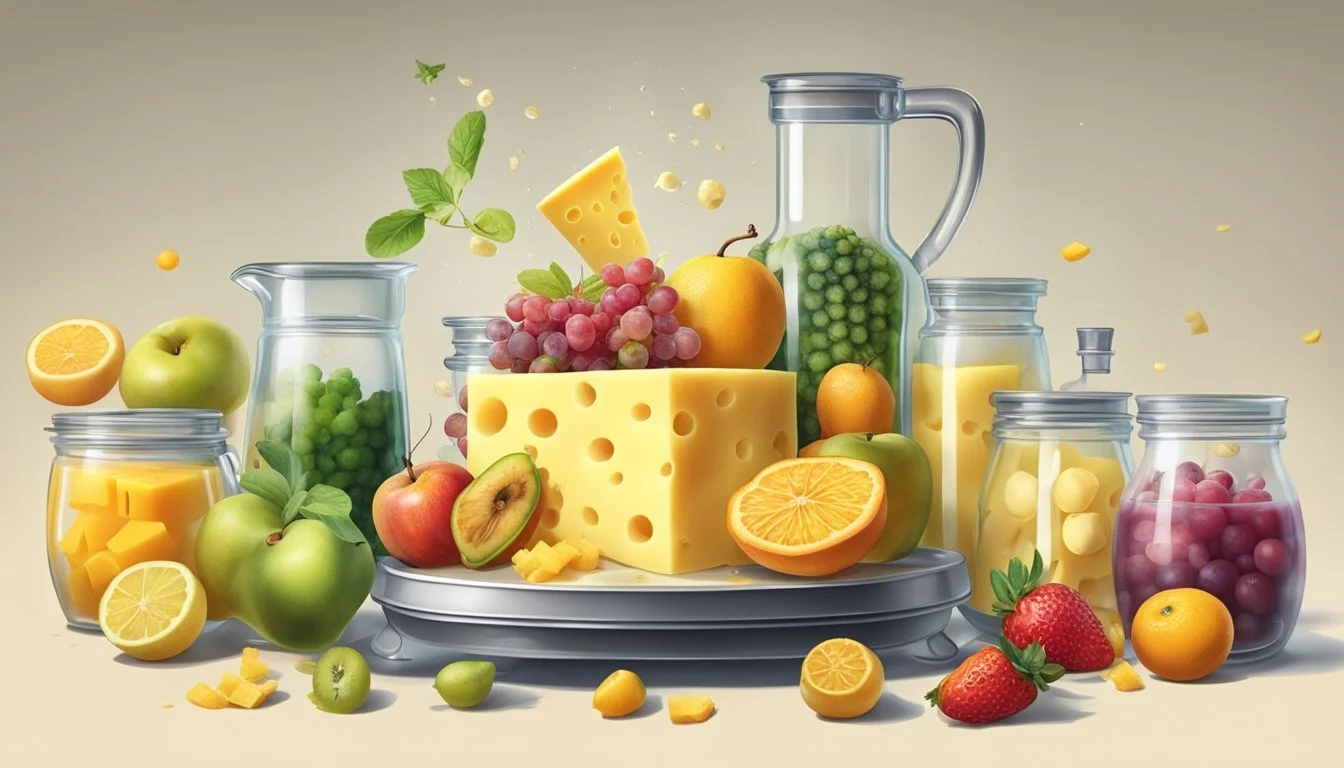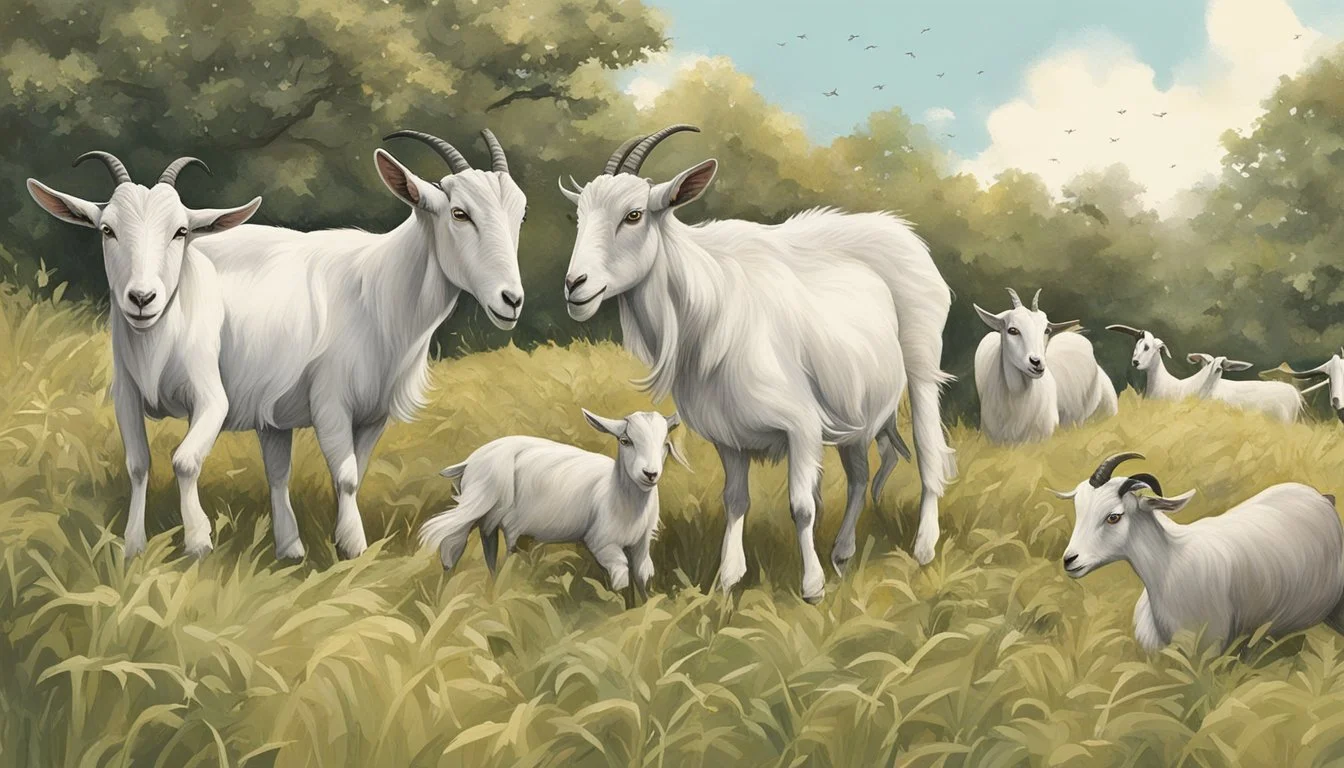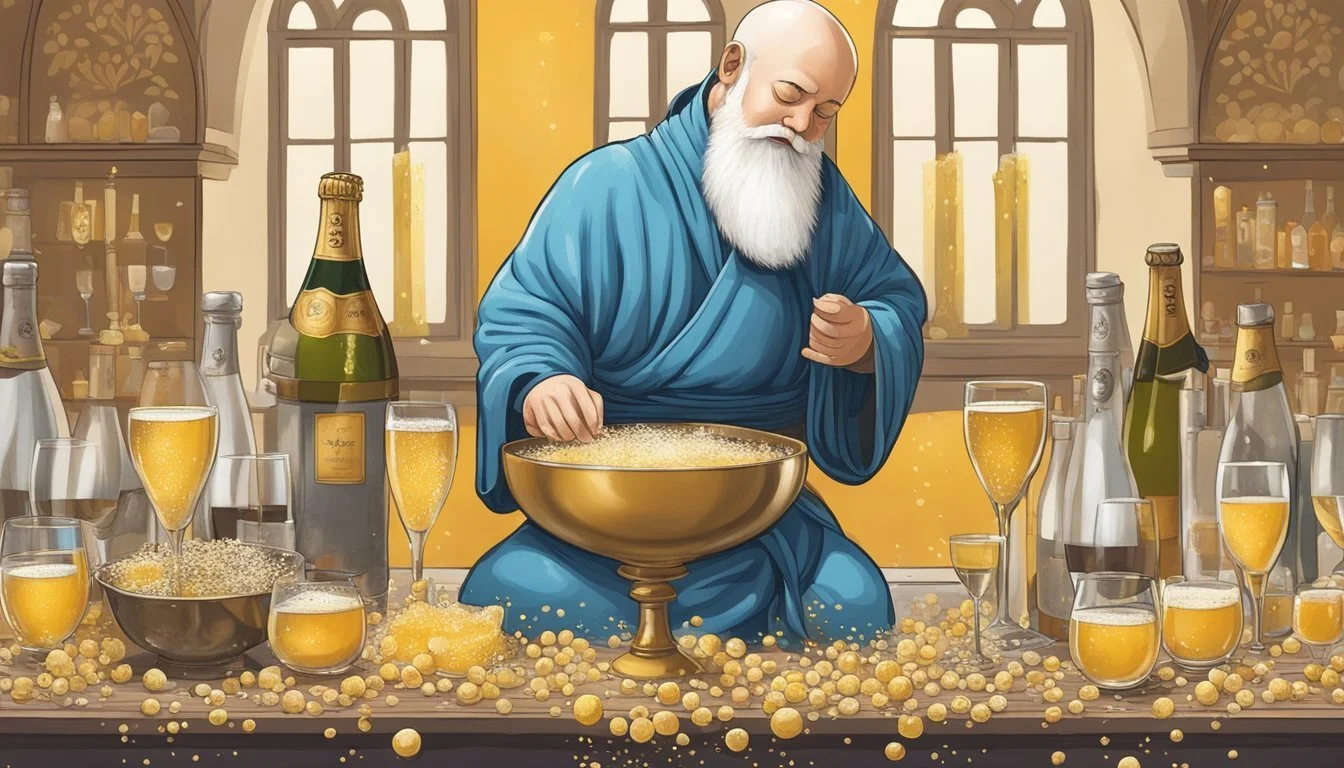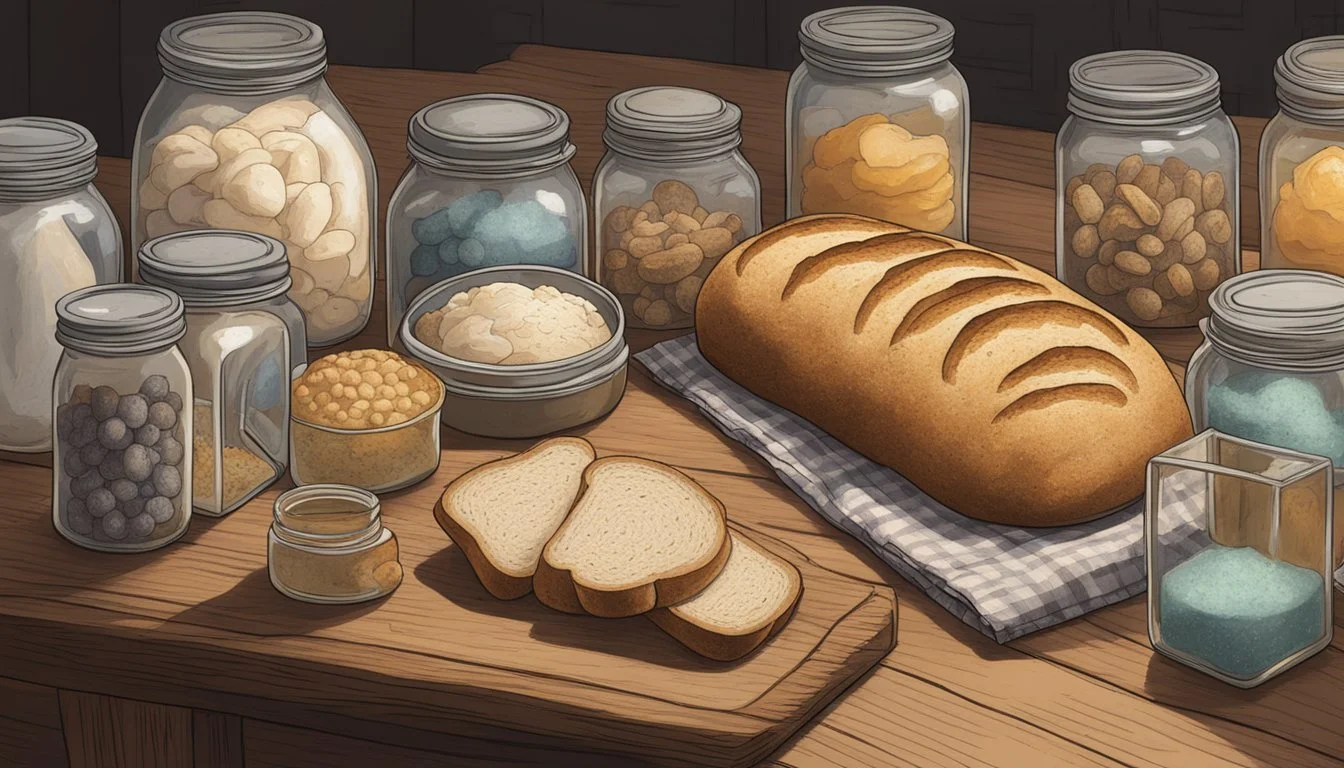10 Bizarre Ways Food Was Discovered
Surprising Origins Explained
Food discoveries often come with fascinating backstories that highlight human ingenuity and serendipity. Understanding these origins not only adds depth to the foods we enjoy but also reflects cultural and historical contexts. Sometimes, accidents in the kitchen have led to some of the most beloved foods we consume today.
Whether through intentional experimentation or sheer luck, these unusual discoveries reveal much about human curiosity and resourcefulness. Looking at the peculiar ways some foods were uncovered can give us a greater appreciation for the culinary landscape we often take for granted.
1) Potato Chips: Accident in a Kitchen
Potato chips, one of the world's favorite snacks, were created by accident in 1853. George Crum, a chef at Moon's Lake House in New York, was trying to satisfy a customer's complaint. The guest kept sending back fried potatoes, insisting they were too thick and soggy.
In frustration, Crum sliced the potatoes as thin as possible. He fried them to a crisp and added extra salt. To his surprise, the customer loved them. This unexpected kitchen mishap gave birth to the crunchy snack known today as potato chips.
Potato chips quickly gained popularity. They were initially a delicacy in restaurants. Over time, they became a mass-produced product available in stores. This serendipitous invention transformed a dissatisfied customer's complaint into a culinary staple enjoyed worldwide.
2) Coffee: discovered by goats
Legend has it that coffee's discovery can be credited to a curious goat herder named Kaldi. Living in Ethiopia during the ninth century, Kaldi noticed that his goats became unusually energetic after eating red berries from a particular tree.
Intrigued by the goats' behavior, Kaldi decided to try the berries himself. He experienced a similar burst of energy and excitement.
His discovery caught the attention of local monks, who used the berries to create a drink that helped them stay awake during long prayer sessions. The knowledge and use of these berries gradually spread throughout the region and beyond.
Coffee eventually made its way to the Arabian Peninsula, where it became a significant cultural staple. It was cultivated, traded, and consumed, paving the way for the global coffee culture we know today.
This remarkable journey from the hills of Ethiopia to the world’s coffee cups began with the curiosity of goats and their observant herder.
3) Ice Cream Cone: by a Waffle Vendor
The ice cream cone is believed to have been invented by a waffle vendor during the 1904 World's Fair in St. Louis.
The story goes that an ice cream vendor ran out of dishes to serve his ice cream.
Seeing this, a nearby waffle vendor offered to help by rolling his waffles into a cone shape, creating an edible container.
This innovative solution quickly caught on, revolutionizing the way ice cream was served.
The waffle cones' crispy texture paired well with the creamy ice cream, making it an instant hit among fair attendees.
Historians have debated the exact details of this origin story, with several vendors claiming credit for the invention.
Nonetheless, the concept of using a rolled waffle as an ice cream container became popular and spread quickly.
This simple yet ingenious idea turned a potential problem into a beloved tradition, forever changing how people enjoyed ice cream.
The waffle cone's invention highlights the creativity and adaptability of food vendors when faced with unexpected challenges.
4) Worcestershire sauce: a happy accident
Worcestershire sauce originated in Worcester, England, in 1835. Lea and Perrins, the creators of the sauce, were initially experimenting with a recipe that included ingredients like anchovy, vinegar, and garlic.
Their first attempt was a failure and deemed inedible. Instead of discarding it, they left the barrels in a cellar.
Months later, the barrels were reopened, and the once "unpalatable" mixture had transformed into a complex and flavorful sauce. The aging process had mellowed the harsh flavors, creating a condiment that quickly became popular.
This transformation turned an experimental mistake into a beloved staple in kitchens worldwide.
5) Sandwich: Invented by Earl of Sandwich
John Montagu, the 4th Earl of Sandwich, is often credited with inventing the sandwich. In the 18th century, Montagu was a dedicated gambler. He needed a meal that could be eaten without leaving the gaming table.
He instructed his servant to place a slice of meat between two pieces of bread. This allowed him to continue playing while eating, minimizing interruptions.
This convenient and practical meal became popular among his peers. The name "sandwich" soon stuck, attributed to the Earl’s innovative eating habit.
Edward Gibbon, an English historian, first recorded the term "sandwich" in his diary on November 24, 1762. He mentioned seeing men eating “a bit of cold meat” between bread slices.
This simple creation revolutionized the way people consumed food, making it a staple in many cultures worldwide. The sandwich remains a beloved and versatile meal to this day.
6) Cheese: milk left out
Cheese is believed to have been discovered by accident thousands of years ago. Early humans, storing milk in containers made from animal stomachs, found that the milk curdled naturally. The enzyme rennet, found in these stomach linings, helped transform the milk into curds and whey.
This accidental discovery was likely replicated many times. Left unrefrigerated, milk would sour and separate, creating curd. Over time, people learned to strain and shape this curd, creating early forms of cheese.
Archaeological evidence supports this theory. Finds such as pottery shards with milk residue suggest ancient cheese-making techniques. These practices spread and evolved, leading to a wide variety of cheeses.
Different regions developed unique methods. Factors like climate, available animal milk, and local customs influenced cheese varieties. Today, the diversity and richness of cheese owe much to these ancient, serendipitous discoveries.
7) Champagne: Monk's Mistake
Champagne, often associated with celebrations, has an unexpected origin. The sparkling beverage traces back to French monks in the 17th century. Though commonly attributed to Dom Pérignon, these monks did not intend to create a fizzy drink.
In the chilly region of Champagne, the fermentation process would often stall due to early frosts. When temperatures warmed, the process would restart, trapping carbon dioxide in the wine.
At first, this bubbly effect was viewed as a flaw. Dom Pérignon worked diligently to prevent bottles from exploding due to this unexpected secondary fermentation. His contributions focused on blending grapes for consistent quality.
Eventually, the taste caught on, and the effervescence became desirable. Thus, what began as a monastic accident turned into a staple of celebrations worldwide.
8) Cornflakes: Accidental Byproduct
Dr. John Harvey Kellogg was on a mission to improve American health through better dietary habits. In the late 1890s, he was experimenting with various grains to create a nutritious cereal for patients at his health facility.
During one of these experiments, Dr. Kellogg accidentally left a pot of boiled wheat to sit out. When he returned, it had gone stale. Rather than discard it, he decided to run the dried wheat through rollers to flatten it. To his surprise, the flattened wheat formed thin flakes.
These flakes, once toasted, became a hit among the patients. This serendipitous discovery led to the creation of cornflakes. Dr. Kellogg believed that bland foods could curb one's passions and promoted cornflakes as part of his health movement, which also emphasized more exercise and less meat consumption.
This accidental creation soon gained popularity, eventually evolving into the beloved breakfast staple known today as cornflakes.
9) Sourdough bread: natural fermentation
Sourdough bread traces its origins back to ancient Egypt. It relies on a "starter," a living mixture of wild yeast and bacteria that naturally ferment the dough. This ancient method predates modern baker's yeast and is essential for its unique qualities.
To start, a sourdough starter is created using flour and water. Over several hours, the mixture becomes a thriving colony of microorganisms. These lactic acid bacteria and wild yeasts ferment the sugars in the flour, producing carbon dioxide bubbles that make the dough rise.
The fermentation process also imparts a distinctive tangy flavor to the bread. The bacteria produce lactic and acetic acids, which give sourdough its signature taste. Warmer conditions can enhance sourness, while cooler conditions yield more fruity flavors.
This natural fermentation process is not only important for flavor but also affects the bread's texture and nutritional profile. The extended fermentation breaks down gluten, making the bread easier to digest. Additionally, it increases the bioavailability of nutrients, providing a healthier alternative to conventional breads.
10) Popsicles: invented by a child
Popsicles were the brainchild of 11-year-old Frank Epperson. It began in 1905, in San Francisco, on a frosty winter night. Frank mixed soda powder with water and left it outside with a stirring stick.
The next morning, he discovered the mixture had frozen solid around the stick. This accidental creation was a delightful, icy treat. Frank continued to make these frozen treats and originally called them "Epsicles."
Years later, in 1923, Frank patented his invention. He renamed it "Popsicle," a nod to the lollipop. His children influenced the new name, favoring "Pop's ‘sicles."
Subsequently, Frank sold the Popsicle rights to the Joe Lowe Company. The story of this simple, yet beloved icy treat, began with the curiosity and ingenuity of a young boy.
The Role of Accidental Discoveries
Accidental discoveries have played a significant role in shaping the foods we enjoy today. These unintentional innovations highlight the serendipitous nature of culinary evolution and its lasting impact on modern cuisine.
Historical Context
Throughout history, many food items emerged not by design, but by happy accidents. For instance, corn flakes were created in the 19th century when the Kellogg brothers sought a bread substitute. Their experiment with boiled wheat led to the flaking process that gave birth to this popular breakfast cereal.
In 1905, an 11-year-old named Frank Epperson unintentionally invented the popsicle. He left a mixture of powdered soda, water, and a stirring stick outside overnight, resulting in a frozen treat that became an iconic summer delight.
The creation of chocolate chip cookies in 1930 was similarly fortuitous. Ruth Wakefield, co-owner of the Toll House Inn, mixed chunks of chocolate into her cookie dough, expecting them to melt, but instead, they retained their shape, giving rise to a beloved dessert.
Impact on Modern Cuisine
The accidental discoveries of foods such as oyster sauce, champagne, and popsicles have had a profound influence on modern cuisine. These innovations not only introduced new flavors and textures but also sparked new food trends and culinary techniques.
For example, oyster sauce was discovered in 1888 by Lee Kum Sheung, who left oyster soup simmering for too long. The resultant thick, flavorful sauce became a staple in Chinese cuisine and laid the foundation for Lee Kum Kee, a leading brand in Asian sauces.
Champagne owes its existence to the bubbles created during secondary fermentation, initially seen as a fault. The unique characteristics of champagne have since elevated it to a symbol of celebration globally.
These examples illustrate how accidental discoveries have enriched and diversified our culinary landscape, creating enduring legacies that continue to be appreciated and enjoyed around the world.
Trial and Error in Gastronomy
The discovery of many foods involved experimentation, accidents, and a fair share of trial and error. From ancient times to documented historical cases, exploring the origins of some foods reveals fascinating stories of culinary innovation.
Early Experimentations
In ancient China, tofu emerged from accidental interactions between soy milk and coagulants such as nigari. It is believed that early cooks might have unintentionally mixed boiled soybeans with salt containing calcium and magnesium, causing the soy milk to congeal.
Similarly, the discovery of fermentation processes in ancient civilizations led to staple foods like bread, beer, and yoghurt. Cultures around the world stumbled upon the benefits of letting grains, fruits, and milk undergo fermentation, creating new, lasting food sources through trial and error.
Documented Cases
Corn flakes, invented by Dr. John Harvey Kellogg in the 1890s, began as a health product. Kellogg's experimentation within his health facility led to the creation of the now-iconic breakfast cereal, initially aimed at aiding digestion with an inexpensive, bland food.
Champagne, famously associated with the Champagne region of France, was another serendipitous discovery. Accidental fermentation of grapes during cold seasons produced bubbly wine, turning a potential product flaw into a celebrated beverage.
These cases highlight how unplanned events and meticulous experiments alike have contributed to our diverse culinary landscape, showcasing humanity's innovative spirit in gastronomy.






